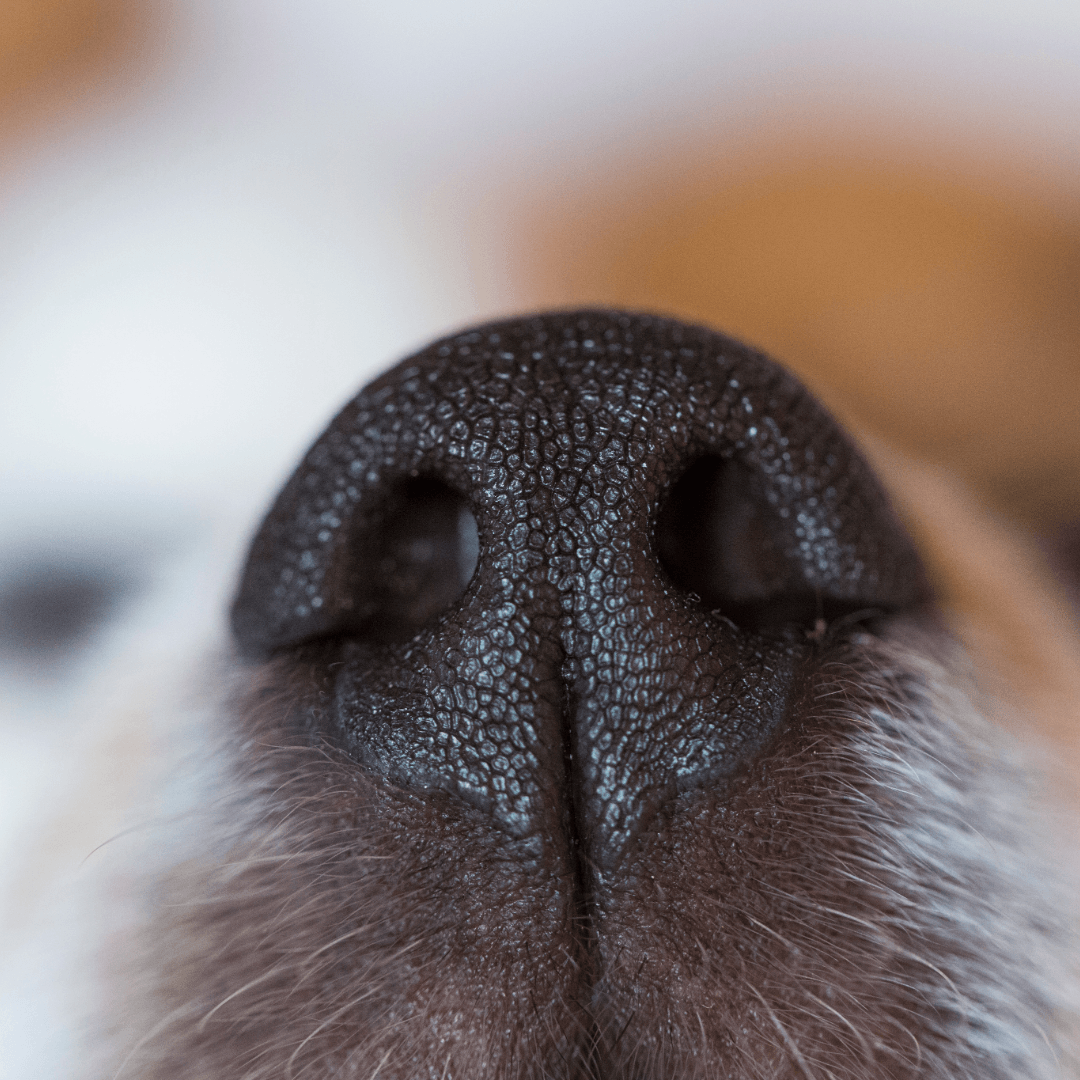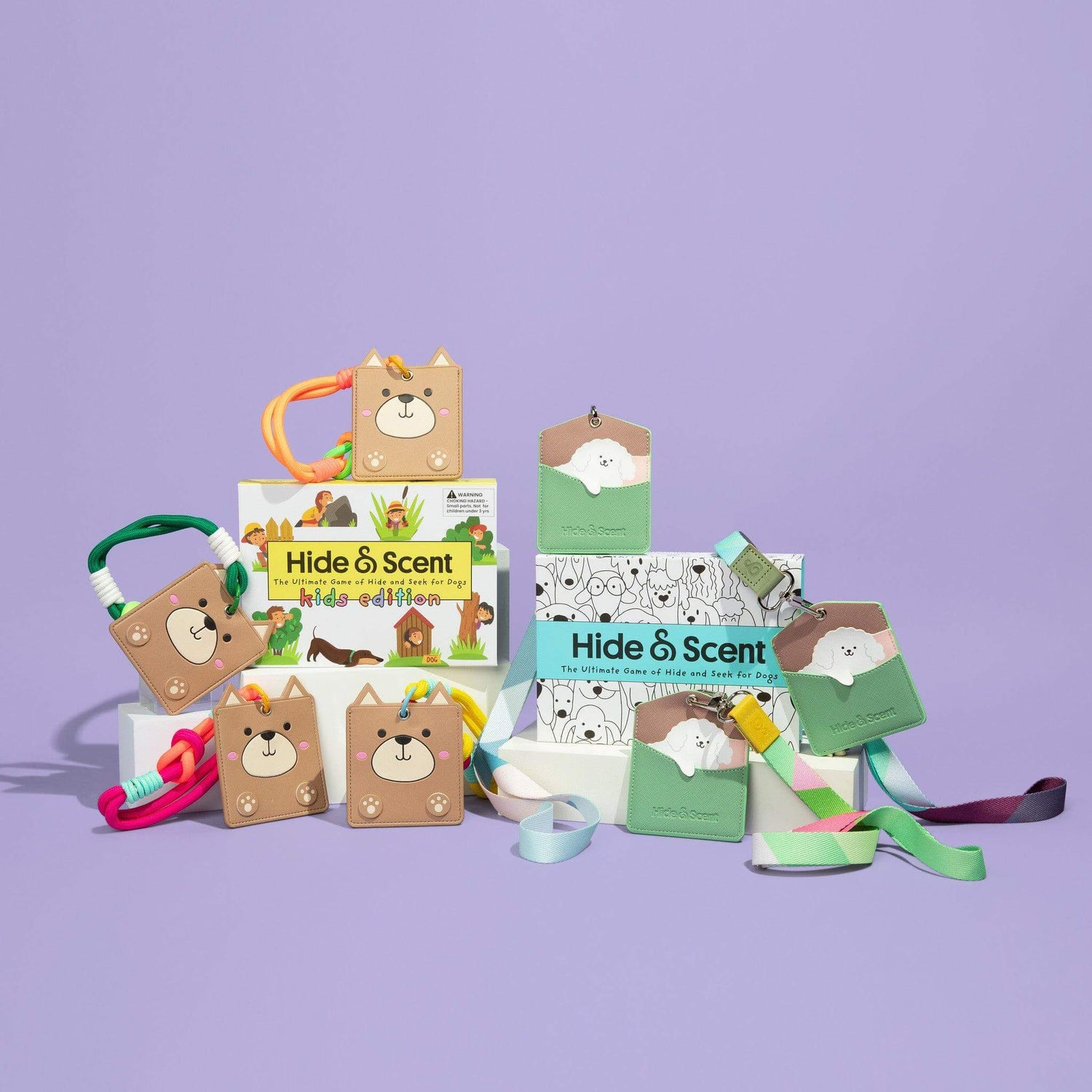
How Letting Your Dog Sniff Boosts Wellbeing
Humans are primarily visual creatures who rely heavily on our eyes to perceive the world around us. Our vision provides us with a wealth of information about our environment, guiding how we navigate, interact with, and understand our surroundings. Through our eyes, we recognize objects, interpret facial expressions, and assess potential risks and hazards. Imagine how limiting it would be if, on a daily basis, we were only given few opportunities to use our vision to understand and enjoy life.
In contrast, dogs primarily perceive the world through their sense of smell. Unlike humans, dogs don't have to imagine what life would be like with restricted use of their primary sense—it is a reality for many. Allowing dogs to engage with their environment through sniffing can profoundly impact their wellbeing and quality of life. Giving your dog the freedom to explore through sniffing can relieve stress, enhance cognitive function, improve mood, and prevent behavioral issues.
Understanding a Dog's Exceptional Sense of Smell
Dogs possess an exceptional sense of smell that far surpasses that of humans. This remarkable olfactory ability is primarily due to the complex structure of their nasal passages and the sheer number of olfactory receptors they have. While humans have approximately 5 million olfactory receptors, dogs have around 220 million, depending on the breed. Their sense of smell is so acute that they can detect scents at concentrations as low as one part per trillion, a difference that equates to a dog detecting a teaspoon of sugar in an Olympic-sized swimming pool.
The canine olfactory system is designed to process and interpret complex scents. Dogs have a special organ called the vomeronasal organ, or Jacobsen's organ, located in their nasal cavity. This organ is involved in detecting pheromones and plays a crucial role in how dogs perceive their environment and communicate with other dogs. Additionally, when a dog inhales, the airflow is split between the respiratory and olfactory regions, allowing them to continuously sniff and take in new scents while breathing.
Dogs use their sense of smell for a variety of purposes. In the wild, their ability to detect scents helps them locate food, identify potential threats, and navigate their territory. In domestic settings, dogs are employed in roles such as search and rescue, tracking, and detection of substances like drugs or explosives. Their keen sense of smell also allows them to detect changes in human physiology, such as cancer or other medical conditions like COVID.
Training a dog's sense of smell can further enhance its abilities, making them invaluable in various fields. Their exceptional olfactory sense, combined with their intelligence and eagerness to please, makes dogs reliable and efficient working animals. Understanding and appreciating a dog's sense of smell not only helps us harness its potential but also deepens our connection with these loyal companions.
Studies Supporting the Importance of Sniffing
Research has demonstrated the importance of allowing dogs to freely use their sense of smell, revealing numerous benefits for their overall well-being. For instance, a study published in Applied Animal Behaviour Science compared dogs that were allowed to sniff freely during walks with those that were restricted from sniffing. The study found that the dogs that were allowed to sniff displayed fewer signs of stress and anxiety. They were also generally calmer compared to the dogs that experienced hurried walks, suggesting that providing opportunities for dogs to explore their environment through scent can promote mental stimulation and stress relief.
In addition to mental and emotional benefits, scent-based activities also contribute to cognitive engagement and enrichment for dogs. A study featured in Frontiers in Veterinary Science examined the impact of scent-based enrichment activities, such as scatter feeding and snuffle mats, on canine cognition. The findings revealed that these activities not only engaged dogs mentally but also reduced the risk of behavioral issues, showcasing the value of incorporating scent-based enrichment into a dog's routine.
Allowing dogs to use their sense of smell freely can also have a positive impact on their emotional regulation. Research published in the journal Animals explored how scent-related activities, such as sniffing during walks and scent games, contributed to dogs' overall mood and emotional stability. By engaging in these activities, dogs can achieve a more balanced emotional state, which can lead to improved behavior and reduced anxiety.
Further supporting these findings, a study in the Journal of Veterinary Behavior investigated the effects of scent-based enrichment on canine behavior. The study observed that dogs provided with such enrichment displayed significant improvements in behavior, showing reductions in aggression and anxiety. This underscores the critical role that scent-based enrichment plays in enhancing a dog's overall quality of life.
How Pet Owners Can Provide More Opportunities for Sniffing
There are numerous ways pet owners can incorporate more opportunities for sniffing into their dogs' lives, enhancing their mental and emotional health:
- Extended Walks: Allow your dog to take its time on walks, stopping to explore different scents. Opt for longer walks in parks or nature reserves where there is an abundance of diverse scents to discover.
- Varied Environments: Expose your dog to different settings, such as forests, beaches, and new neighborhoods. This will introduce them to a range of smells and help stimulate their cognitive abilities.
- Scent-Based Games: Play games with your dog that involve using its sense of smell, such as hide-and-seek with treats or toys. This can provide mental stimulation and a sense of accomplishment.
- Scent Work Training: Enroll your dog in scent work classes or activities where they can use their powerful sense of smell in structured exercises. This not only engages them mentally but also helps build their confidence.
- Interactive Toys: Provide toys that involve searching for treats or food using their sense of smell, such as snuffle mats and treat puzzles.
- Scent Trails: Create a scent trail in your backyard or home using treats or a favorite toy. This encourages your dog to use its sense of smell to navigate and find the hidden rewards.
Allowing your dog to sniff freely is essential for their wellbeing and happiness. By providing them with opportunities to use their incredible sense of smell, you can help improve their behavior, mood, and quality of life. Dogs rely heavily on their noses to interact with and understand the world around them, so giving them the freedom to explore their environment through their sense of smell is a simple yet impactful way to enhance their lives. Next time you take your dog out, give them the freedom to lead the way and enjoy the world through their nose. By doing so, you contribute to a happier, healthier life for your furry friend.












